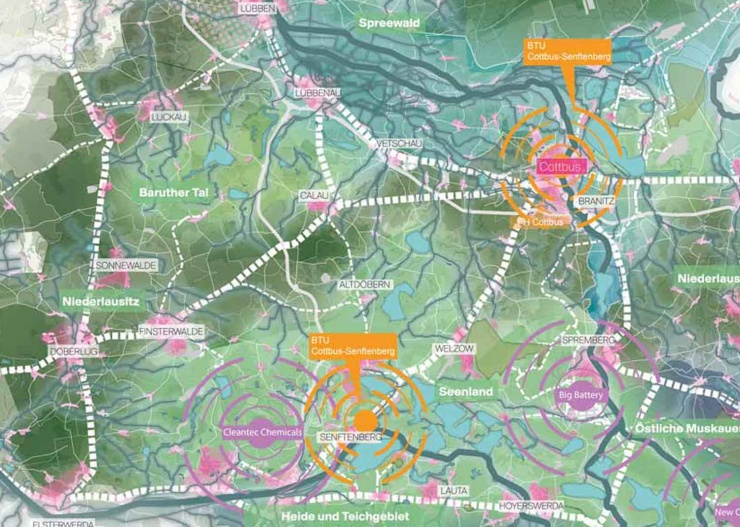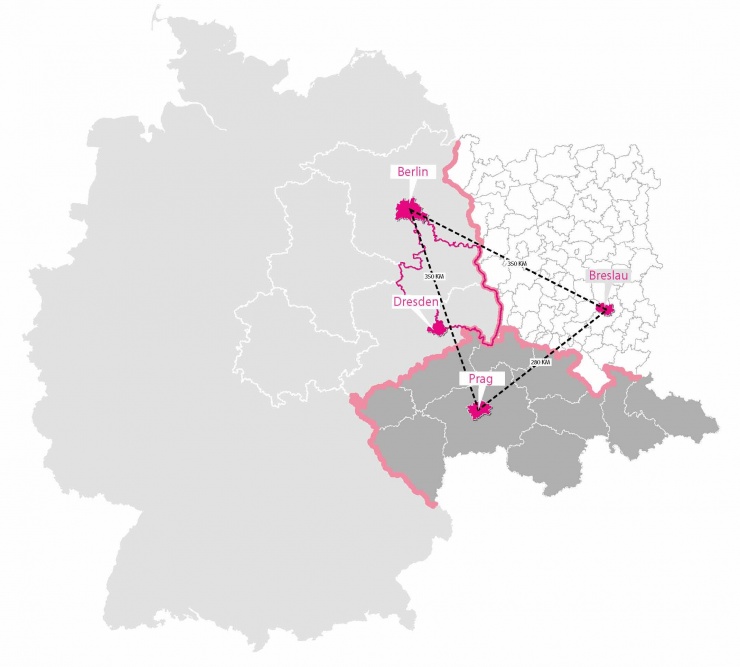-
Multiple assignments - planning laboratory spatial images Lausitz 2050 - designing sustainable transformation
-
Territory of Lusatia (Lausitz), southern Brandenburg and eastern Saxony, Germany
-
Leibniz-Institut für ökologische Raumentwicklung e. V. (IÖR) Weberplatz 1, D-01217 Dresden Bereich: Interdisziplinäres Zentrum für ökologischen und revitalisierenden Stadtumbau (IZS), Gottfried-Kiesow-Platz 1, D-02628 Görlitz
-
Entire area of the Lausitz region, extends over 6 districts
-
completed, 2021
-
2112-PRL
-
Spatial structural analysis, overall spatial strategy, deepening of sub-spaces, explanatory report
-
Oliver Seidel, Lisa Iglseder, Lydia Oehlwein
-
freiwurf LA, Büro Happold, Thomas Gfeller
Time for Lausitz
1 room | 2 engines | 3 fields
With the cessation of coal mining and power generation, the region of the Lausitz is deprived of one of its central economic foundations. Many employees will lose their jobs as a result of the necessary climate and structural policy decisions. At the same time, the region is confronted with the ecological consequential damage caused by years of resource depletion.
The crisis-ridden development shows that a sustainable economic, social and ecological development in the Lausitz can no longer be based on linear systems, but that a circular economy must be built up more and more and on various levels and standards. It is time to promote material cycles, energy cycles, the hybridization of infrastructure, the networking of sectors and value chains, to establish synergies and to generate meaning.
The key to sustainable development in the Lausitz is a careful approach that is differentiated in terms of time and space. There are a handful of clearly identifiable development drivers that can add value to the region in the short- and medium-term. They form the drivers of regional development, so to speak, and also network the Lausitz nationwide. Promoting them in a targeted manner should be the first focus of the investment.
With the conversion of the Lausitz into a model region for organic farming, sustainable forestry and resource-conserving timber management, it can not only open up new sources of income for the primary sector but also significantly increase the attractiveness of the region as a place to live, as a location and as a holiday resort/destination. The structural funding promised for the phase-out of coal should therefore also benefit the primary sector and thus strengthen sustainable value chains.
-
Multiple assignments - planning laboratory spatial images Lausitz 2050 - designing sustainable transformation
-
Territory of Lusatia (Lausitz), southern Brandenburg and eastern Saxony, Germany
-
Leibniz-Institut für ökologische Raumentwicklung e. V. (IÖR) Weberplatz 1, D-01217 Dresden Bereich: Interdisziplinäres Zentrum für ökologischen und revitalisierenden Stadtumbau (IZS), Gottfried-Kiesow-Platz 1, D-02628 Görlitz
-
Entire area of the Lausitz region, extends over 6 districts
-
completed, 2021
-
2112-PRL
-
Spatial structural analysis, overall spatial strategy, deepening of sub-spaces, explanatory report
-
Oliver Seidel, Lisa Iglseder, Lydia Oehlwein
-
freiwurf LA, Büro Happold, Thomas Gfeller
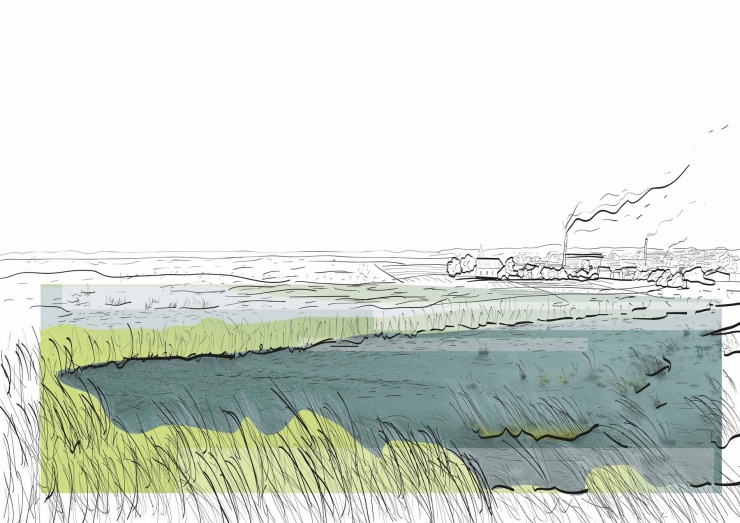 Spatial changes and their tempos - Slow reclamation and settlement.
Spatial changes and their tempos - Slow reclamation and settlement.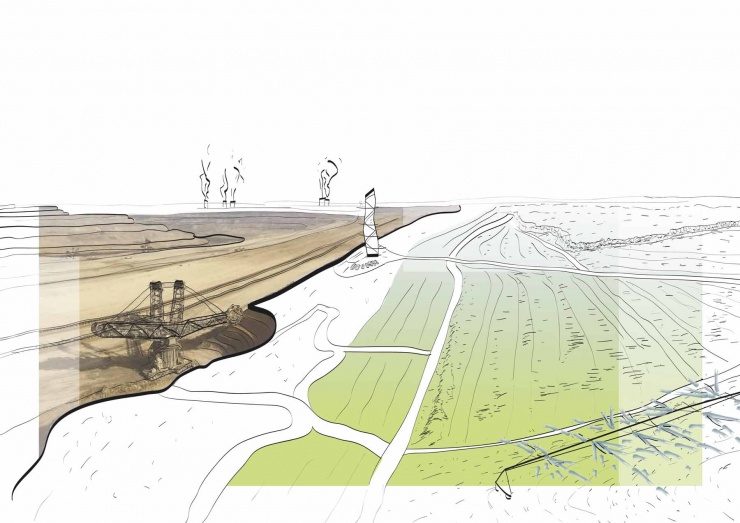 Rapid exploitation of resources.
Rapid exploitation of resources.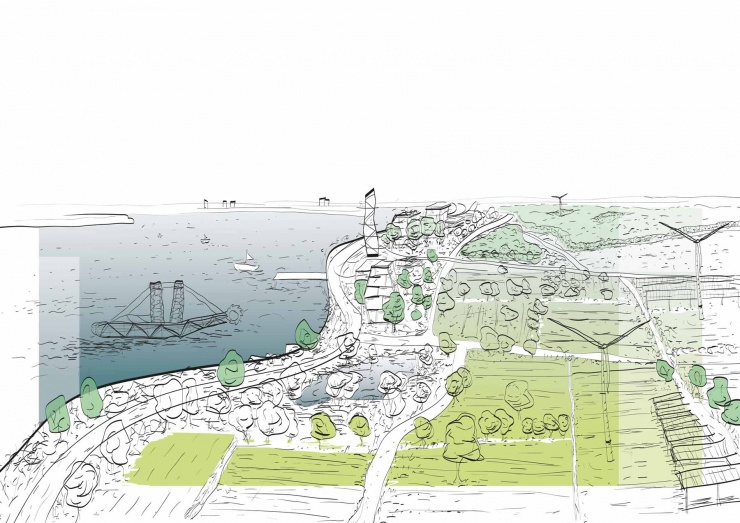 resilience
resilience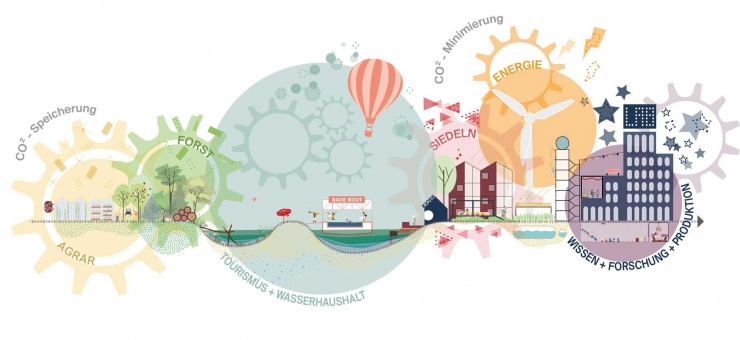 Circular systems as a model for the future - a region designed in a cycle.
Circular systems as a model for the future - a region designed in a cycle.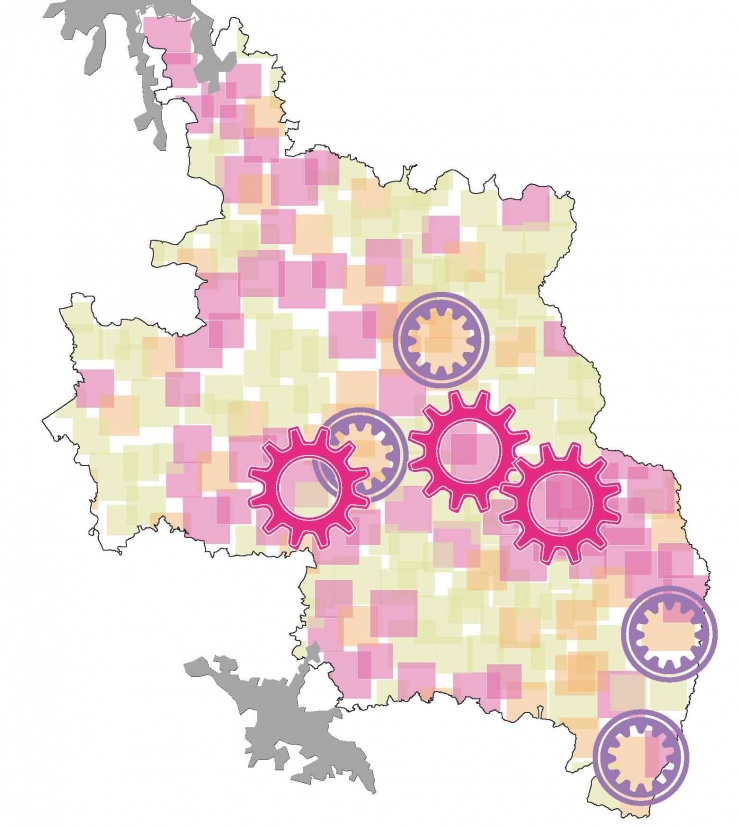 1 room | 2 engines | 3 fields
1 room | 2 engines | 3 fields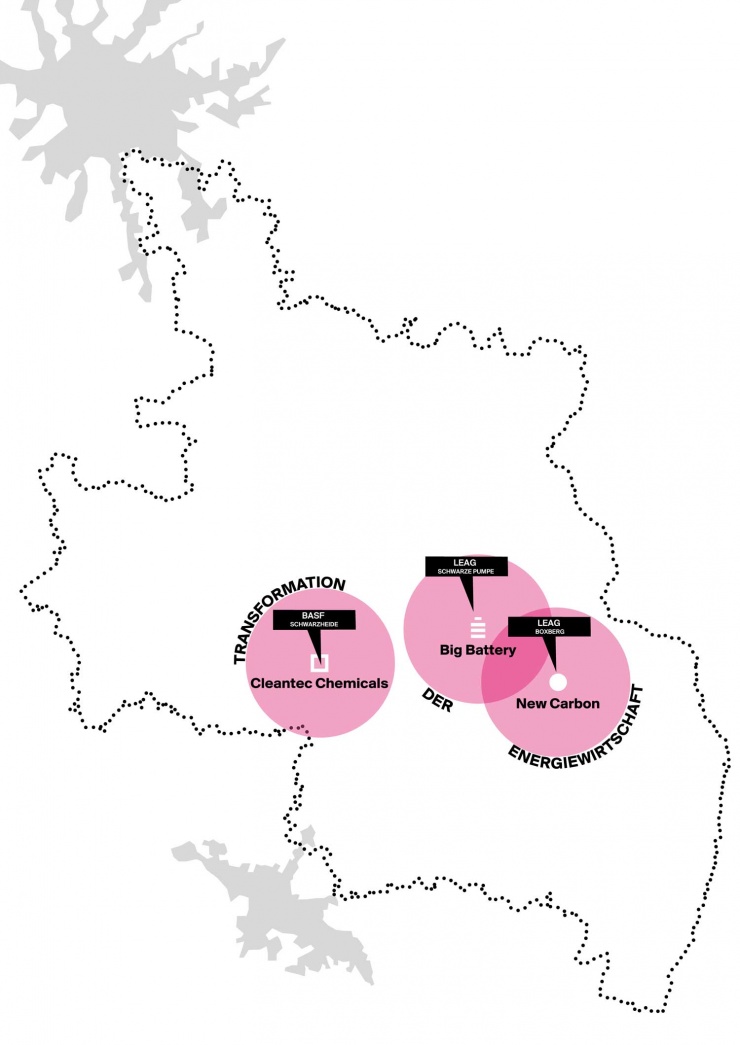 Engines, Push Strategy: A New Energy Economy.
Engines, Push Strategy: A New Energy Economy.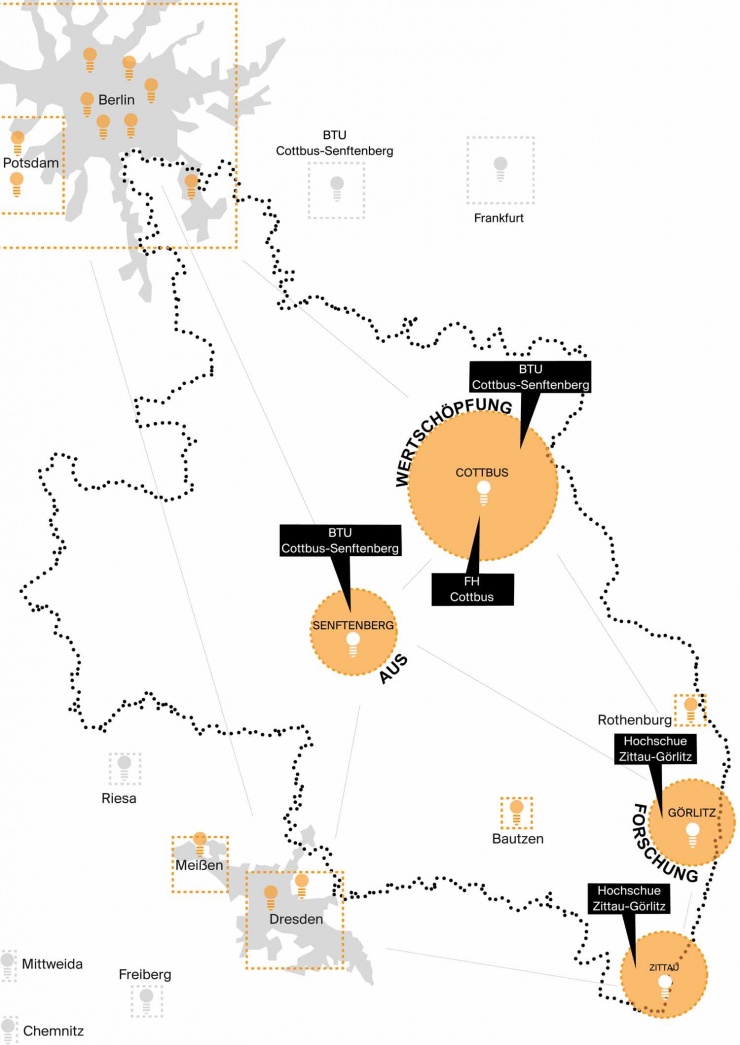 Engines, push strategy: added value from research and education.
Engines, push strategy: added value from research and education.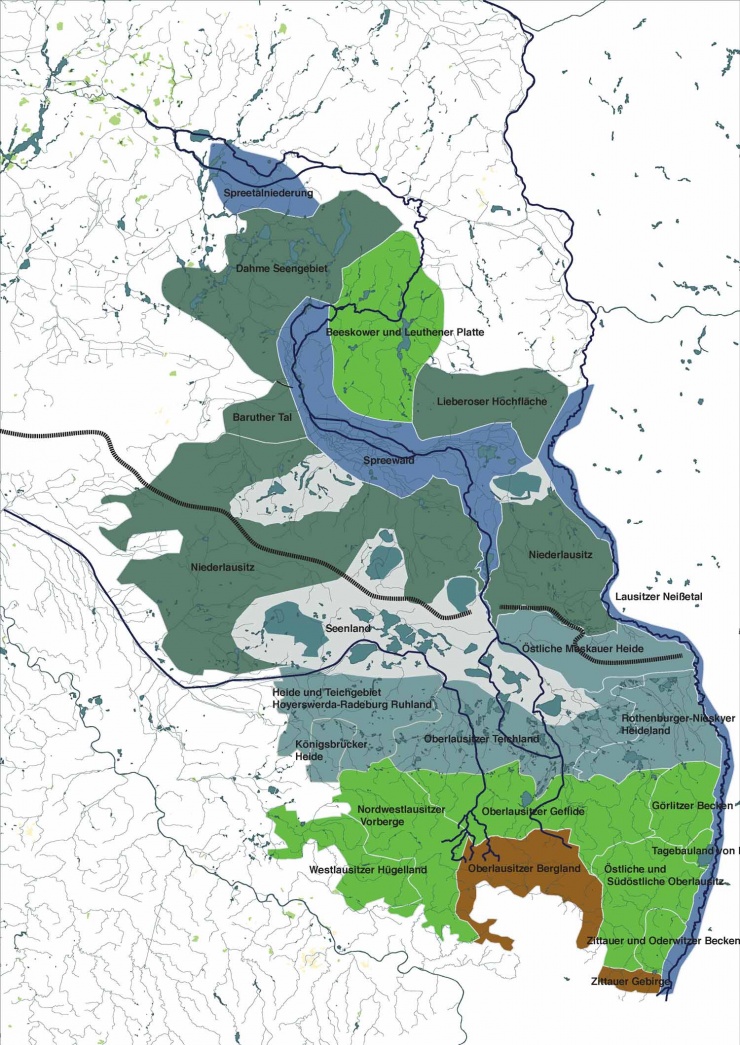 Pull strategy: A sponge landscape
Pull strategy: A sponge landscape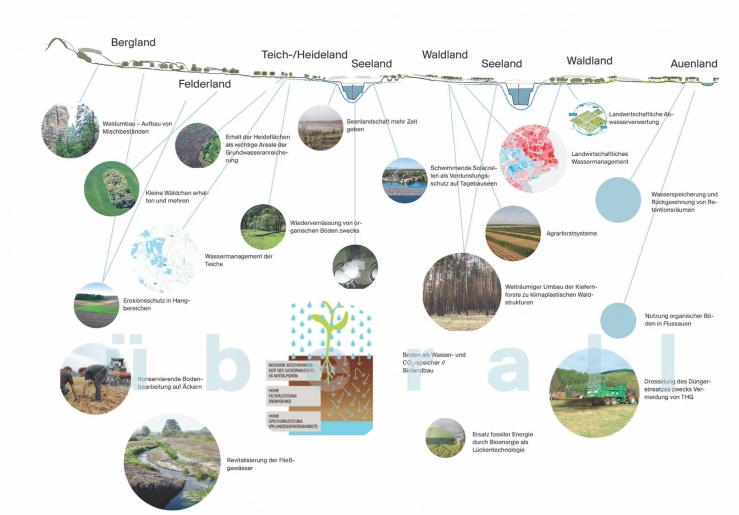 A sponge landscape
A sponge landscape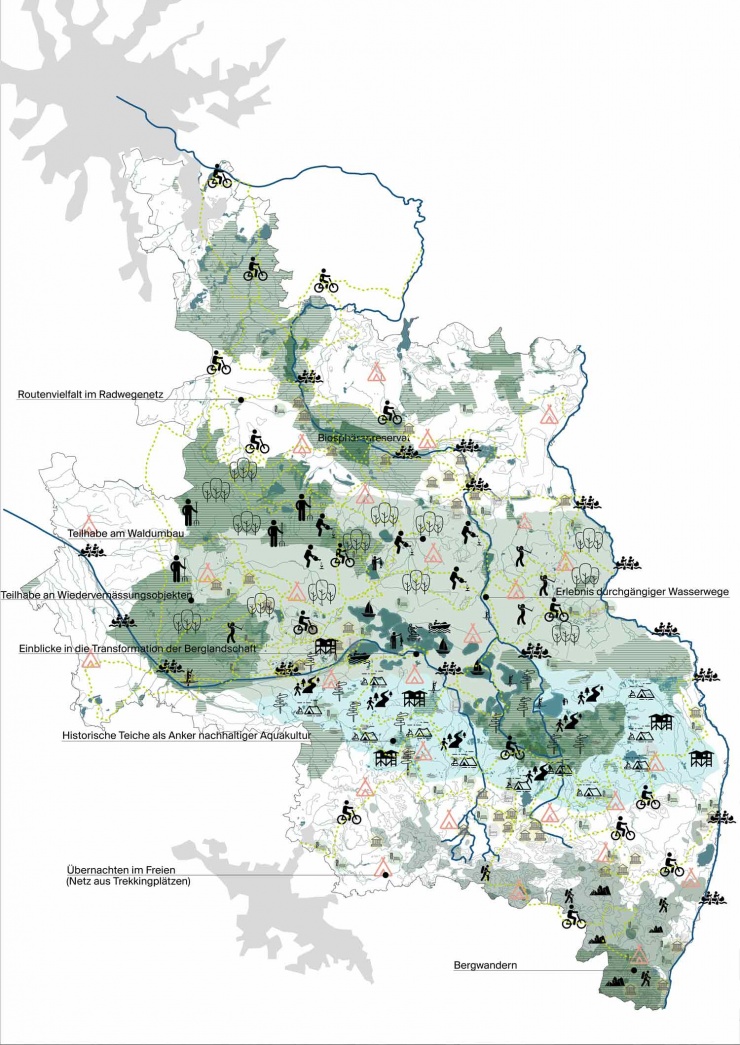 Pull strategy: tourism
Pull strategy: tourism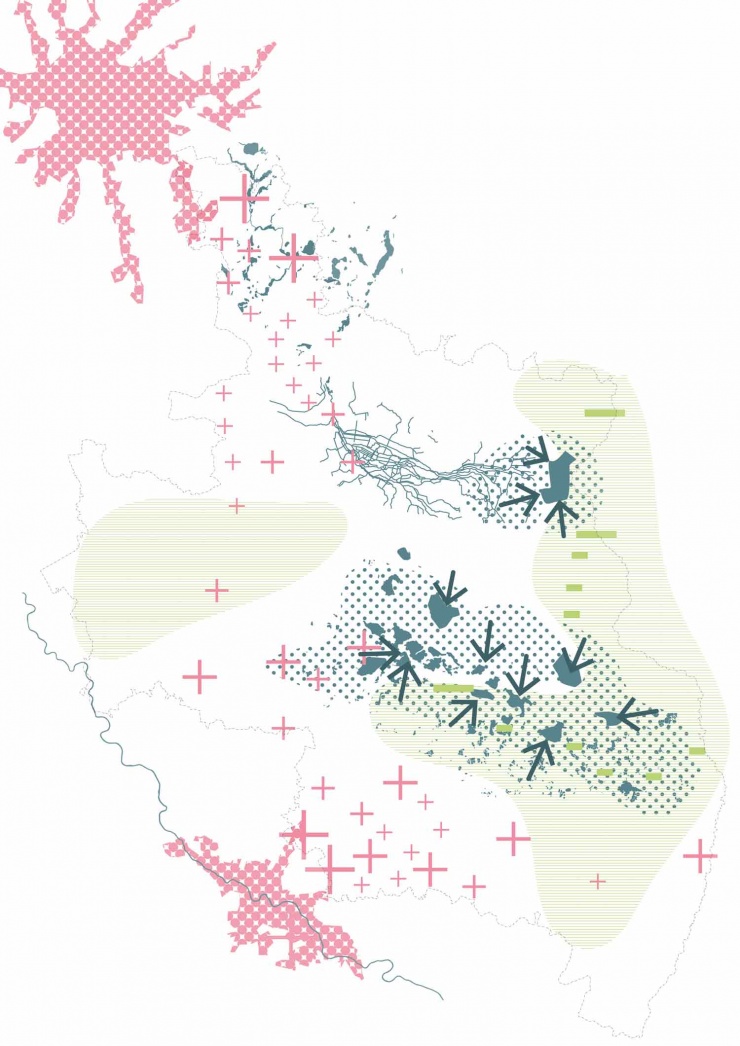 Pull strategy: Landscape makes the Settlement
Pull strategy: Landscape makes the Settlement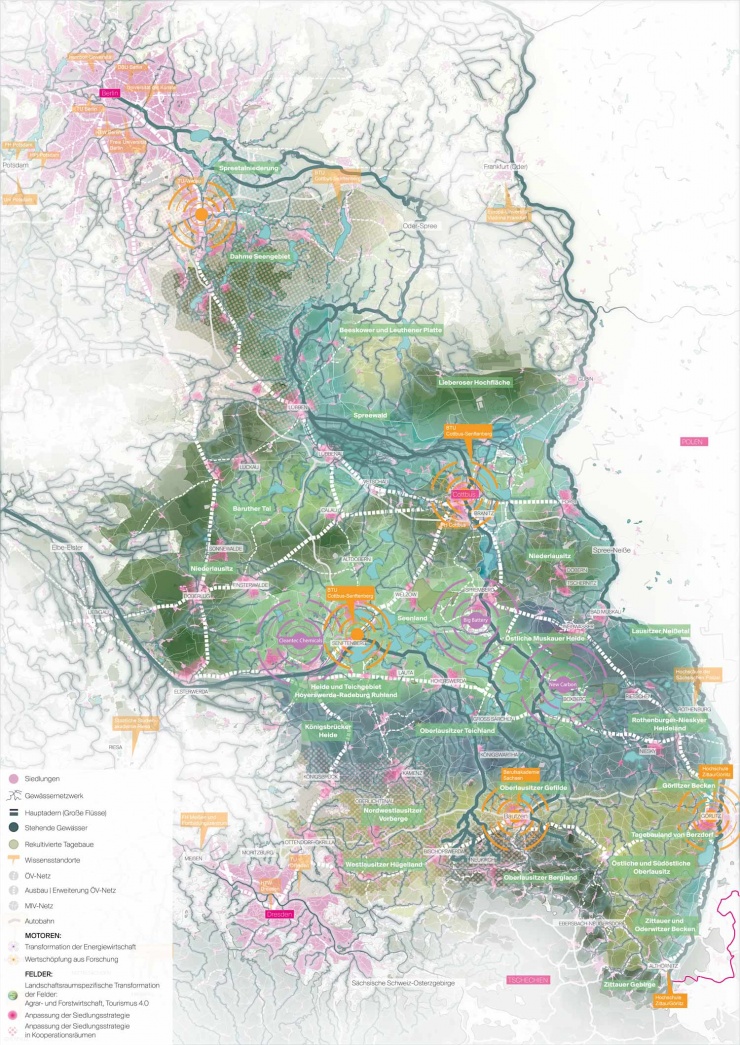 Spatial image: time for Lausitz
Spatial image: time for Lausitz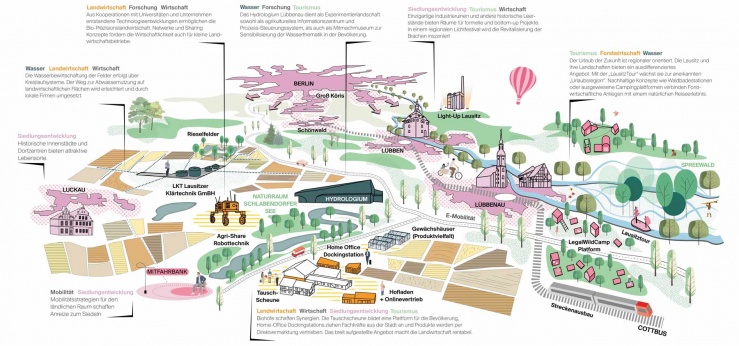 Focus area 1: Berlin and the surrounding area
Focus area 1: Berlin and the surrounding area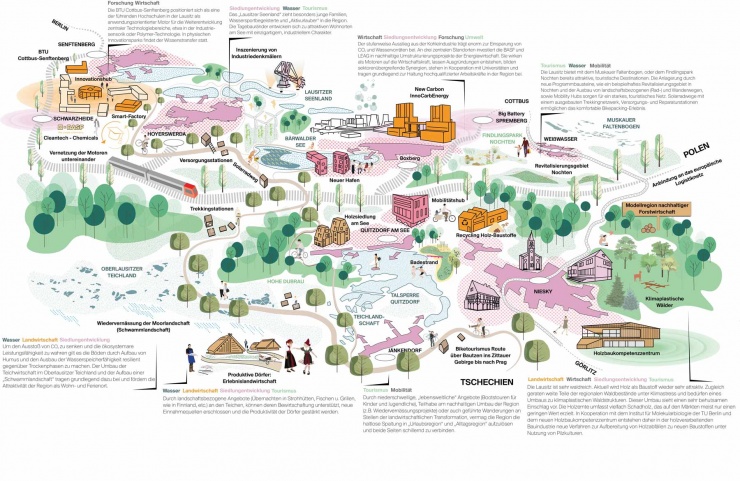 Focus area 2: NewCarbon and traditional pond landscape
Focus area 2: NewCarbon and traditional pond landscape
